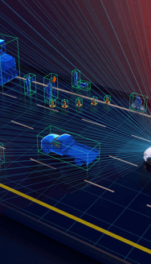Temperature sensors: measuring temperatures
Measuring high temperatures with a thermocouple
To measure high temperatures, a thermocouple is often the best solution. These sensors are based on two wires composed of dissimilar metals, such as nickel and zinc, joined at both ends. When one of the connections is heated, a voltage arises, the strength of which depends on the temperature. This proven, relatively cheap method is widely used. However, this is complicated by the fact that the voltage between the two wires is very small. This has to be taken into account with the cabling and connections, because excessive transition resistance or a wrong plug can turn the system on its head.
Measuring low temperatures with a Pt element
At somewhat lower temperatures of up to about 700 °C/1,300 °F, a Pt element is a good option. The core of this kind of sensor consists of a platinum wire, the resistance of which is highly dependent on the ambient temperature. The industry standard is a Pt-100, which has a resistance of exactly 100 Ω at 0 °C/32 °F.
There are a wide selection of versions available commercially, with a range of base resistances. The higher this value, the bigger the change in resistance with a temperature change. That means it is easier to detect that change, but the downside is that the exact resistance can only be measured by passing a current through it. The higher the resistance, the more internal heat this current generates, which affects the accuracy of the measurement.
Temperature measurements with NTC and PTC resistors
Thermocouples and Pt elements are fully normalized, unlike the third category: NTC and PTC resistors. These sensors vary from manufacturer to manufacturer, so please check carefully to ensure that the specs match your application. The resistance of an NTC or PTC also depends on temperature, but the relationship is exponential rather than linear. This characteristic makes them ideal for measuring the temperature over a limited range.
The temperature coefficient of an NTC is negative, so the resistance drops as the temperature rises. This version is the most commonly used. The advantage of a PTC, which has a positive temperature coefficient, is that it can also be used as a protective device. If the exponential response is designed to coincide with the maximum temperature, a PTC blocks the current so that nothing untoward happens if this limit is reached.
Chips with built-in temperature sensors
Besides these main categories, two additional groups are also worth mentioning. Firstly, more and more chips with built-in temperature sensors are becoming commercially available. They are cheap to make and contain all of the processing electronics. However, they are not yet as accurate as the other sensors mentioned above, or they are limited to a certain temperature range.
Finally, temperature can be measured with an infrared camera. If it is impossible to get close enough with a sensor and you want to measure at a distance, a heat camera can offer a solution.
Coming soon: temperature sensors
We’re working hard behind the scenes on preparing temperature sensors for inclusion in our online sensor database. If you need to know more about the technical specifications of level sensors right now, we understand. We recommend you request information from our sensor specialists until the database has been updated. Send an e-mail with your question.







